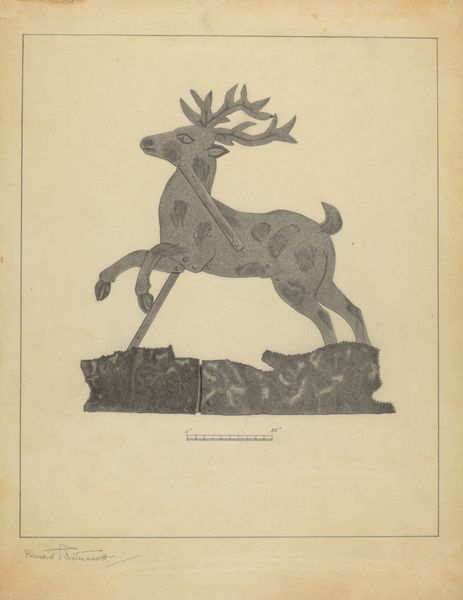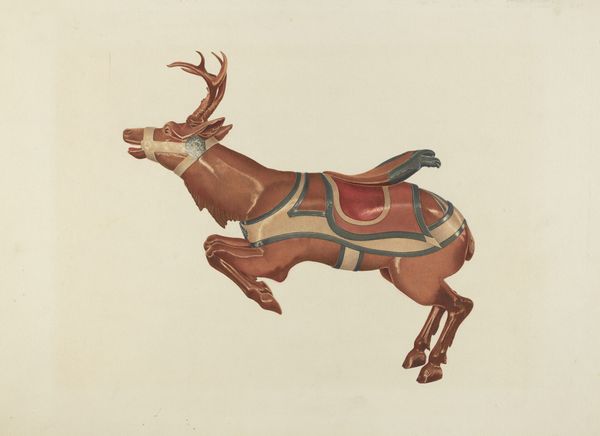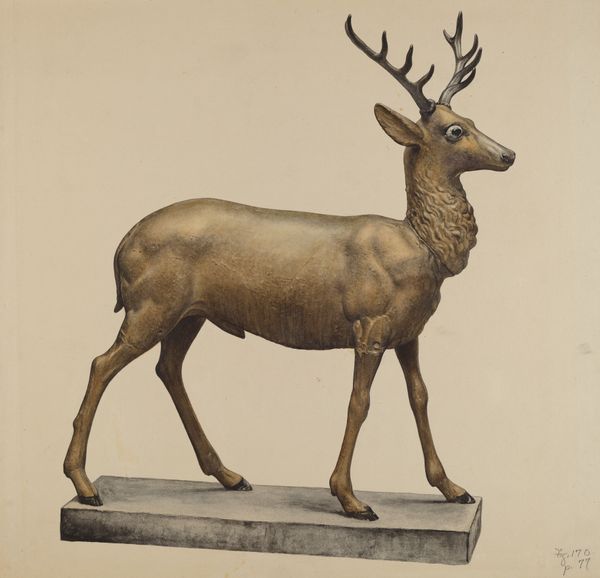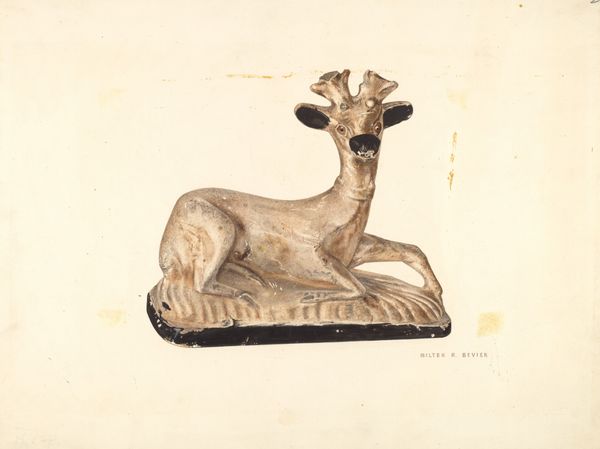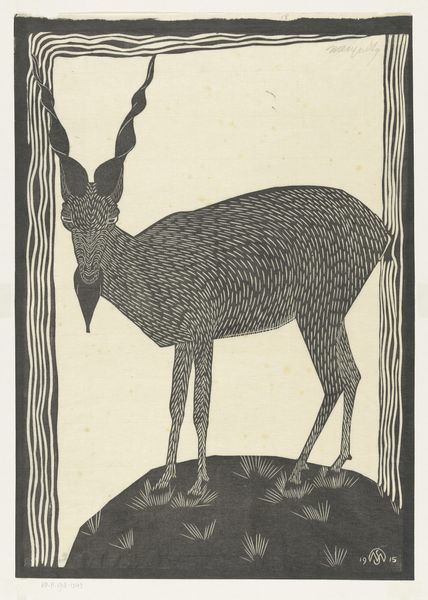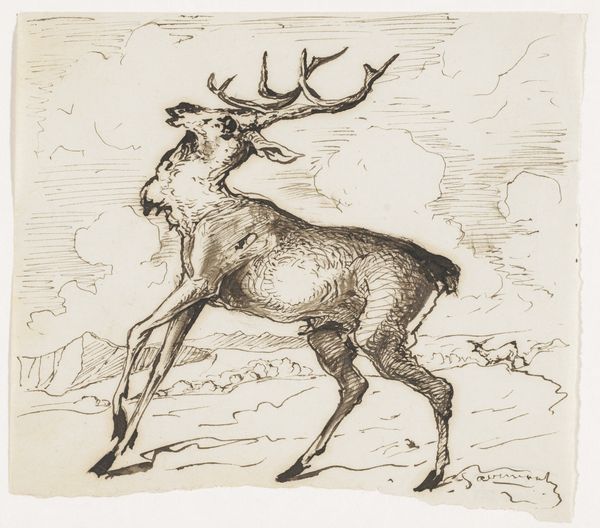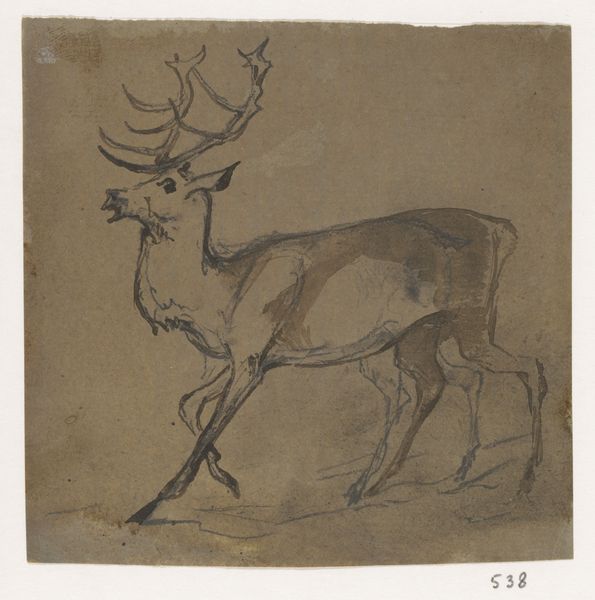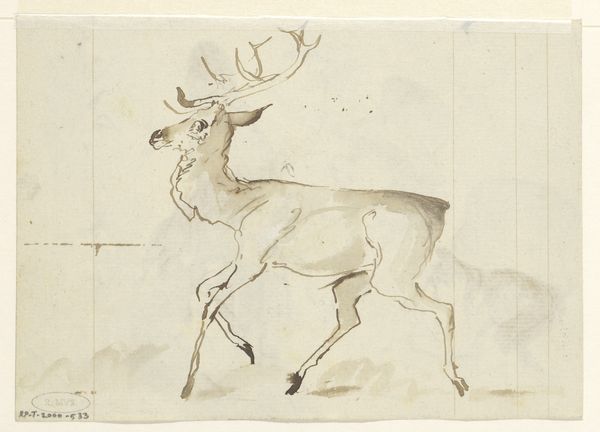
drawing, metal, pencil
#
drawing
#
metal
#
figuration
#
pencil drawing
#
pencil
Dimensions: overall: 44.4 x 33.7 cm (17 1/2 x 13 1/4 in.)
Copyright: National Gallery of Art: CC0 1.0
Curator: Oh, I adore this. This leaping deer almost seems ready to prance right off the paper. Editor: Yes, there is an unexpected stillness combined with that implied motion. I'm drawn to its melancholic nature, a bit like an old memory. Curator: Let me paint the scene. This pencil drawing, likely dating to around 1938, depicts a metal deer weather vane by Helen Hobart. The surface feels both precise and organic, and I just love its slightly naive charm. Editor: A weather vane. Well, the deer has often represented vigilance and adaptability, responding to the winds of change. In heraldry, it’s a symbol of harmony and peace. Its depiction in this way, as a design, suggests it captures both of these ideas. But looking closely, that base seems oddly fragmented… Curator: It does, doesn’t it? Almost like broken terrain. Perhaps hinting at the anxieties of the era, even with the deer itself remaining graceful. Maybe it's about nature navigating instability, or perhaps more broadly, resilience amid challenges. The drawing offers that interpretation in a rather understated way. Editor: That base also adds an earthbound quality that anchors it to its function—sensing wind and direction, or predicting the future. But as a representation, the drawing suggests something more. Curator: Something more...Yes, like holding up a mirror to society itself! The original intention behind it—functional design—expands and deepens the original vision. It becomes something deeply reflective, a testament to the ability to capture elegance and movement even amidst fragmentation. Editor: Beautifully said. I think there is also the psychological component about our ability to perceive something and know where the wind will blow next. Curator: Well, isn't art all about capturing what is invisible—the in-between, the barely felt—and rendering it, however subtly, into the visible world? A leaping metal deer transformed into pencil marks that transcend mere observation. It whispers of quiet endurance and adaptability in a changing world, wouldn’t you say?
Comments
No comments
Be the first to comment and join the conversation on the ultimate creative platform.
